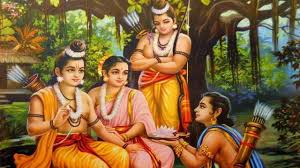The Ramayanam, an ancient Indian epic that transcends time and culture, continues to captivate audiences with its timeless lessons and rich narrative. Authored by the sage Valmiki, the Ramayanam is not just a story; it’s a journey of righteousness, devotion, and the triumph of good over evil. As of July 30, 2024, we revisit the key elements of this magnificent epic, highlighting its relevance and the lessons it offers to contemporary society.
The Story So Far
The Ramayanam narrates the life and adventures of Prince Rama, the seventh avatar of the god Vishnu. The tale begins in the kingdom of Ayodhya, where Rama, born to King Dasharatha and Queen Kausalya, is loved by all. His brothers—Bharata, Lakshmana, and Shatrughna—stand by him with unwavering loyalty.
The story takes a pivotal turn with the decision to crown Rama as the king, which is interrupted by the scheming of Queen Kaikeyi, who demands that her son Bharata be made king instead, and Rama be exiled to the forest for fourteen years. This event marks the beginning of Rama’s journey into the wilderness, accompanied by his devoted wife Sita and his loyal brother Lakshmana.
Key Events and Characters
The Exile and the Forest Adventures:
During their exile, Rama, Sita, and Lakshmana encounter various sages, demons, and divine beings. One significant event is the encounter with the demoness Surpanakha, whose attack on Sita leads to her brother Ravana, the ten-headed demon king of Lanka, abducting Sita.
Rama’s Allies:
In his quest to rescue Sita, Rama forms alliances with various beings, most notably the vanara (monkey) prince Hanuman and the vanara king Sugriva. Hanuman, in particular, plays a crucial role in locating Sita in Lanka and delivering Rama’s message to her.
The Battle of Lanka:
The climax of the Ramayanam is the epic battle in Lanka, where Rama, aided by his allies, confronts Ravana and his formidable army. The battle is not just a physical confrontation but also a moral one, highlighting the virtues of courage, loyalty, and justice.
The Return and Coronation:
After defeating Ravana and rescuing Sita, Rama returns to Ayodhya, where he is crowned king. His rule, known as Rama Rajya, is considered an ideal period of justice, prosperity, and peace.
Timeless Themes and Lessons
The Ramayanam, beyond its narrative, imparts several timeless lessons:
The Importance of Dharma (Righteousness): Rama’s unwavering commitment to dharma, even in the face of personal suffering, sets an exemplary standard of righteousness and duty.
Devotion and Loyalty: Characters like Hanuman and Lakshmana epitomize unwavering devotion and loyalty, showing that true service and friendship are invaluable.
The Triumph of Good Over Evil: The eventual defeat of Ravana underscores the eternal truth that good always triumphs over evil, reinforcing the moral fabric of society.
Contemporary Relevance
Even today, the Ramayanam remains relevant, offering insights into personal conduct, governance, and relationships. It teaches the values of humility, respect for elders, and the importance of moral integrity. In a world often marked by conflict and confusion, the Ramayanam stands as a beacon of hope and guidance.
Conclusion
As we reflect on the Ramayanam on this day, July 30, 2024, it serves as a reminder of the enduring power of epic tales. The story of Rama, Sita, and their companions continues to inspire and educate, providing a roadmap for leading a life of virtue and integrity. Whether one views it as a religious scripture or a literary masterpiece, the Ramayanam’s impact is undeniable and everlasting.
